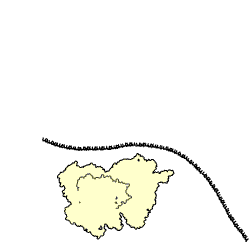Validating gram positive signal peptides using their isoelectric point (PI)
- gerben voshol

- Oct 25, 2021
- 2 min read
Updated: Nov 27, 2021
There are two very important properties of signal peptides, these are their charge and hydrophobicity. In this post I describe how the charge can be used to validate signal peptides.

What are signal peptides?
Signal peptides are short N-terminal amino acid sequences that cause a protein to be exported out of the cell and that are usually cleaved off after the protein has been transported across the membrane. Signal peptides can be divided into three distinct regions: the n-region which is positively charged the h-region containing a hydrophobic core and the c-region which is usually more polar with small and neutral amino acids at position -3 and -1 relative to the cleavage site.
The positive charge in the n-region is an important property of signal peptides and is vital for the correct orientation of signal peptides in the membrane. If the charge at the n-region is low, or even negative, it can result in a protein being no longer secreted through the conventional secretion systems such as Sec and/or TAT.

What is the isoelectric point (pI)?
The isoelectric point is the pH at which a protein (or any other molecule) carries no net charge. This is an important property of proteins and can for example determine their solubility at a certain pH or their orientation in a charged membrane. When a protein has a high pI and it is in a solution with a lower pH, it will have a net positive charge. This might then disrupt the hydration sphere leading to precipitate out of the solution (aka acid precipitation). A proteins pI is also responsible for their separation using polyacrylamide gel electrophoresis (native gel) or for their purification using ion exchange chromatography. Luckily it is relativey easy to determine the theoretical pI using a computer program for example my own PIpred.
Linking the isoelectric point and signal peptides
In 2004, Bendtsen and collegues were working on a new version of signalP (version 3.0) and they cleaned the signal peptide dataset using several properties. This included the removal of unusual cleavage sites and signal peptides with a net negative charge. As indicated above, charged n-regions of signal peptides which have a pI higher than the pH of the environment have a positive charge. Indeed as can be seen in the figure below using the signal peptides used to train signalP (version 5.0).
When splitting these signal peptides in half and plotting the pI of the N-terminus (including the n-region) on the X-axis versus the pI of the C-terminus on the Y-axis shows that the n-region for almost all gram positive signal peptides have a pI higher than 7.0-7.5. This is interesting, because the intracellular pH of for example Bacillus is maintained around pH 7.0-7.5. Therefore almost all gram positive signal peptides have a positive charge (as they should). It can also be seen that some signal peptides have a negatively charged n-region and therefore are "odd" signal peptides. Upon closer inspection, the protein with UniProtID O88038 is a Lantibiotic-like peptide which is most likely transported through a dedicated ABC-transporter and not the classical secretion system.




Comments